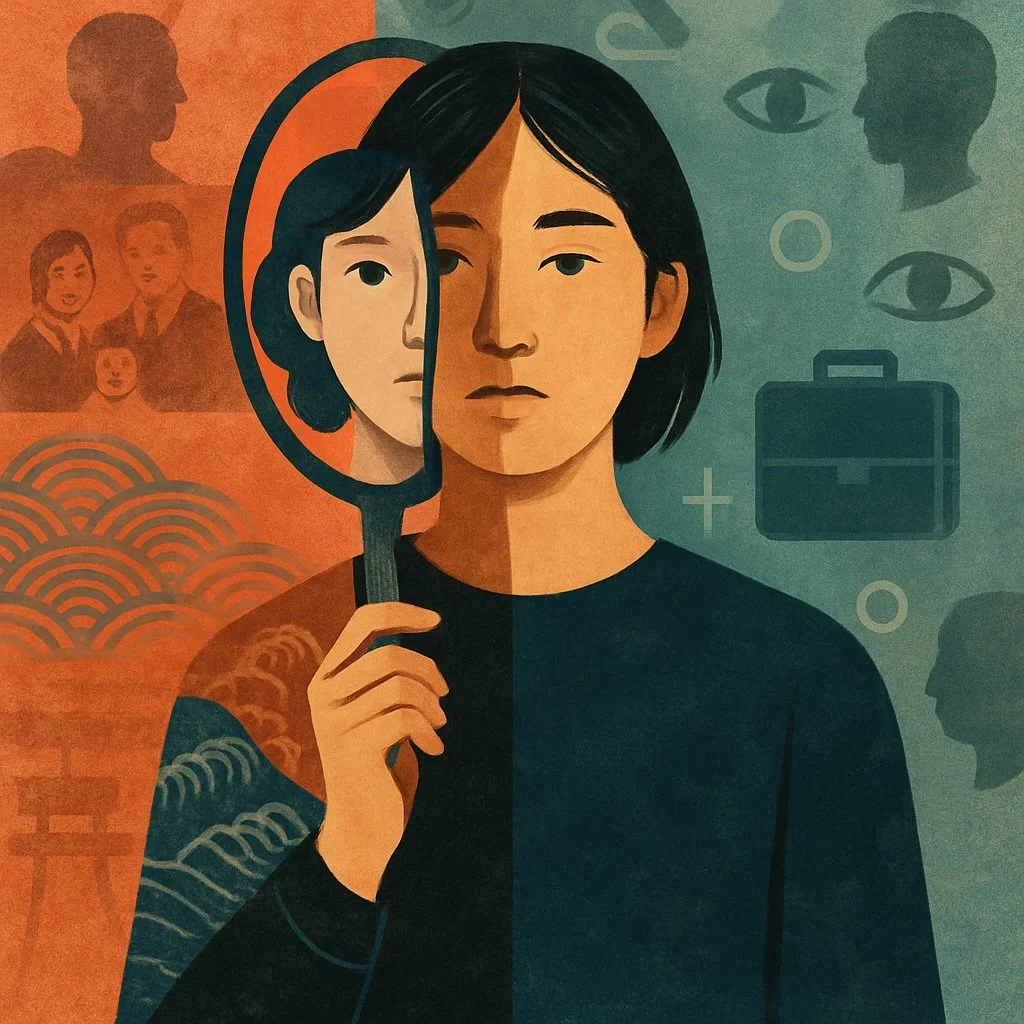How the “Model Minority” Came to Be, and Why it Might Surprise You
“I was ignorant of what my family had gone through. They, like most other Japanese Canadians their age, spent their entire youth being told that they would never be Canadian, not for real.”
Image generated by OpenAI using the prompt: 'Model minority myth; editorial-style illustration’.
Eighty years ago, an American sociologist named William Petersen wrote a piece in the New York Times about Japanese Americans titled, tellingly, “Success Story, Japanese-American Style.” Most of it recounted the atrocities committed against Nikkei (the Japanese diaspora) during World War II—internment, loss of rights, harassment and the like—until about halfway through, when Petersen veered sharply left and described how fantastically they bounced back. Despite all odds, once the war was over, Japanese Americans became law-abiding, went to church, attended college, and had high-paying jobs—sometimes, at greater rates than “native-born whites”! He dubbed them “hyperefficient competitors.” What a remarkable feat, he described in the article, and with “almost totally unaided effort.” All other minorities could learn from them, he prescribed.
Despite being Japanese Canadian and an American citizen, I didn't know that this article is where the idea of a model minority originally came from until I was 21—but, to be fair, I didn't know a lot of things about being Nikkei. My Japanese family, interned on the West Coast, didn't pass on their language to the next generation. They didn't talk about before the war, or when they'd been sent to camps, or when the government took the farm they'd built from scratch and sold it against their will; they quietly moved to the suburbs of Toronto, made good money, bought a house, started a family, and that was that.
William Petersen’s 1966 New York Times piece titled ‘Japanese-American Style’.
When I recently and finally started looking into my Japanese Canadian background, I was stunned to find how little had been passed down. No language, recipes, or stories; it was like my family had simply spawned into Ontario with no past. It took a long time for me to come to terms with how much was lost. I was hurt, angry, ashamed; how could anyone let such a rich family history vanish? What was their end goal? Why did they set me and future generations up to feel like this?
I was ignorant of what my family had gone through. They, like most other Japanese Canadians their age, spent their entire youth being told that they would never be Canadian, not for real; unable to vote, unable to get jobs in most sectors, unable to own property. They faced discrimination from their peers and government for simply existing before being thrown into camps during World War II. When they were given the opportunity to forget, to move on and integrate into the society they'd been excluded from for so long, they took it. They became exactly what Canadian society wanted them to be: hard-working, well-assimilated families with no visible ties to Japanese culture; the perfect success story. And when companies or landlords gave them preferential treatment by banking on the stereotype, when their children experienced unprecedented socioeconomic movement upwards, they were incentivized to keep up the model minority reputation, not just for the betterment of their lives, but for their survival.
A photo of the author’s great-great grandfather and his family from the 1930s in B.C.. (Photo: Courtesy Ava Edwards)
There are, of course, a lot of things wrong with the model minority idea. There's the fact that it portrays all Asian diaspora as high-achieving and super-intelligent, ignoring those who fall through the cracks. Or that it pits Nikkei against everyone else, putting down all other groups to raise up another. Or that the original Times article blatantly blames Black Americans for the system discriminating against them and creating “problem minorities.”
“They became exactly what Canadian society wanted them to be: hard-working, well-assimilated families with no visible ties to Japanese culture; the perfect success story.”
For me, the model minority myth and surrounding stereotypes meant my family was encouraged to throw away their heritage to succeed in a society that was against them. They and so many other Japanese Canadians were punished and ostracized for eating Japanese food, speaking Japanese and having Japanese names before World War II. And the moment they gave up all those things and "became Canadian," they were accepted, praised, rewarded.
Of course they became the “model minority.” What else were they supposed to do? They were beaten down and tired, shuffled from place to place, stripped of everything they owned. This was a broken people, shattered by the government that was supposed to take care of them. A group of people who saw a path to normalcy for themselves and their descendants at the cost of their heritage. And when they took it, they were labelled an example for all racialized groups.
I can't blame my family or any other Japanese Canadian for embracing these stereotypes. What I can do is say the quiet bit out loud: the term “model minority” and other related stereotypes are praise for cultural erasure, for becoming Canadian or American, or whatever the oppressive group wants immigrants to be. Being a model minority means putting your head down, working hard to be a useful member of society and leaving your heritage at the door. If Petersen's article doesn't convince you of that, maybe I will—a 20-something whose family left their Japaneseness behind to give my grandma, my mom and myself a better shot at life.



